
Welcome to Screen Gems, our weekend dive into queer and queer-adjacent titles of the past that deserve a watch or a re-watch.
The Showcase: Show Boat
Seriously, when will we get a biopic of the great Paul Robeson? Few performers have had careers as intriguing as that of Robeson, one of the first major African-American stars of the stage and screen. Robeson’s silky bass voice and bear-like presence made him a thrill to watch. His activism for racial equality as an unapologetic Communist also made him a man surrounded by controversy. Subsequent to his death in 1976, it was revealed that the CIA had targeted Robeson with Project MK-ULTRA, a mind-control experiment that set off two decades of ill health.
Sound like the stuff of movies yet?
Until we get a proper biopic of Mr. Robeson, we have to rely on the handful of movies he left behind. For the legend at his best, we offer up director James Whale’s 1936 adaptation of the Kern-Hammerstein musical Show Boat. Whale, the openly gay director of such classics as Frankenstein and The Invisible Man considered Show Boat his best work, due in large part to performances by a cast that included Irene Dunne, Hattie McDaniel, legendary singer Helen Morgan, and of course, Robeson.
How about we take this to the next level?
Our newsletter is like a refreshing cocktail (or mocktail) of LGBTQ+ entertainment and pop culture, served up with a side of eye-candy.
The plot revolves around the Cotton Palace, a traveling riverboat specializing in theatrical entertainment (think of it as a precursor to riverboat casinos). 18-year-old Magnolia (Dunne), the daughter of the boat’s captain, falls hard for a charming gambler named Gaylord (Allan Jones). Of course, the two marry, have a daughter, and a whole lot of domestic woes thanks to Gaylord’s gambling. Magnolia also has a close friendship with Julie (Morgan), the ship’s resident singer who is secretly an African-American woman posing as white. Julie has married Steve (Donald Cook) in violation of miscegenation laws. Needless to say, that causes some problems as the Cotton Palace ventures into southern states. Also on hand are ship’s cook Queenie (McDaniel) and her husband Joe (Robeson), who help raise Magnolia.
Jerome Kern and Oscar Hammerstein II had written the role of Joe specifically for Paul Robeson, who also advised the pair on their lyrics and depiction of African-American characters. It shows: the Julie-Steve relationship (still a very hot subject in 1936) holds our interest far more than the standard soapy romance of Magnolia and Gaylord. For that matter, Joe and Queenie’s relationship also comes off far more compelling, thanks in large part to the pedigree of the actors playing the roles. We have to wonder what a more modern take on this material focusing more on the African-American characters would look like…
But we digress. Every great musical movie needs a showstopper, and here, we get “Ol’ Man River” as performed by Robeson. Filming the sequence left director Whale stunned, and we can see why: we can’t watch it without getting goosebumps. “Ol’ Man River” deals with time’s indifference to human suffering. And yet, in a way, that gives Joe hope. Life always goes on.
Show Boat is a film of its time, and feels dated in a few key areas (Morgan’s casting as a woman of mixed race is particularly cringey). Still, the film deserves to be seen for its redeeming virtues, including terrific music, Whale’s innovative direction, and Robeson’s performance. One day we might get a movie devoted to Mr. Robeson’s life. Until then, we suggest starting here, and being very grateful he gets to sing.
Streams on Daily Motion. Also available on Blu-Ray.

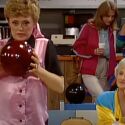


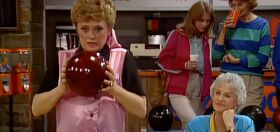

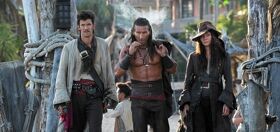
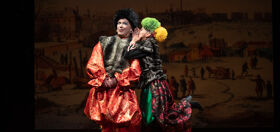


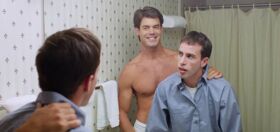


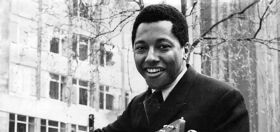
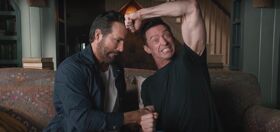



Saps48
Cotton Blossom, not Cotton Palace…
And I believe Julie was biracial.
MarcyMayer
1. In 1943, my mother saw Paul Robeson on Broadway in “Show Boat.” She even waited at the stage door to get his autograph.
2. Irene Dunn was a wonderful actress – and she had a terrific, professionally-trained voice, too.
3. Everyone should see “Gods and Monsters” which is an excellent film about the last days of the life of James Whale, the director.
Tombear
“Just one drop of negro blood………..”
inbama
“We have to wonder what a more modern take on this material focusing more on the African-American characters would look like…”
That would be the wonderful 1971 British revival that introduced magnificent Cleo Laine to the world who, like her character, was mixed-race. Laine’s rendition of “Bill” has influenced just about every singer ever since.
mgconlan
I’ve loved the 1936 “Show Boat” since I first saw it at a revival screening in the 1970’s, and judging from the awesome way James Whale shot Paul Robeson’s “Ol’ Man River” number it’s pretty obvious he had the hots for him! A couple of comments on the posts above:
First, the biracial character of Magnolia was the work of the original author of “Show Boat,” Edna Ferber, who was anti-racist before anti-racism was cool. She later repeated the situation in “Giant,” in which Dennis Hopper’s character (the son of Rock Hudson and Liz Taylor!) marries a Mexican and is beaten up for it.
Also, though composer Jerome Kern and librettist Oscar Hammerstein II (also an anti-racist before it was cool, as witness his song “Carefully Taught” from “South Pacific”) had originally intended the role of Joe for Robeson, he didn’t play it in the first production in 1927. Robeson was in Britain at the time and so they got another Black concert singer, Jules Bledsoe, to play the role. Though Robeson recorded “Ol’ Man River” in 1927 with Paul Whiteman, he didn’t actually play the part on stage until the 1932 revival.
And when Arthur Freed of MGM produced a “Show Boat” remake in 1951, he wanted Lena Horne to play Julie. MGM’s distribution people went ballistic, pointing out to Freed that no Southern theatre would show a film in which a white man and a Black woman were paired together on screen. (Ironically, Horne’s real-life husband, Lennie Hayton, was white; they were married in Paris in 1946 at a time when no U.S. state allowed mixed-race couples to marry if one of the parties were white, and the marriage was arranged by the man Horne had really wanted to marry, the Black Gay composer/arranger Billy Strayhorn.) Instead of Horne, Freed ended up casting Ava Gardner in the role, with her singing voice dubbed by Annette Warren, and in order to make her look half-Black they had her wear a makeup by Max Factor called “Egyptian Blend No. 5” which MGM had originally had Factor concoct because when they first signed Horne in 1940, they had planned to pass her off as a Mexican.
One more thing: the show boat is called “Cotton Blossom” in Ferber’s original novel, Hammerstein’s libretto for the stage version, and the 1929 and 1951 films. But for the 1936 movie it was changed to “Cotton Palace” because the real-life owner of a boat called “Cotton Blossom” threatened to sue if the name was used. And show boats were not self-propelled steamers; they were.barges, pushed up and down the river by tugboats that were called “tow boats” but actually were behind the show beats, pushing it along the river. Of the three “Show Boat” movies, the 1929 version got it right but the 1936 and 1951 versions got it wrong.
inbama
Beautiful sharing here.
Thanks.
Rock Star
cool man
JeffBaker
Wouldn’t the late (alas!) Robert Guillaume would have been perfect to play Robeson in a screen biopic? He had the acting chops and certainly had the voice!
KyleMichelSullivan
I love the James Whale version of Show Boat. The 1951 was splashier and all that, but it diminished the roles of Queenie and Joe and turned Magnolia into a mom who just wants to stay home with her daughter instead of a major success in her own right.
christopher lord
Please don’t forget Helen Morgan’s rendition of “Bill,” one of the most beautifully-acted songs in any movie. A singular talent.
Gordon of the Bassets
Mr Robeson was the first professional singer to sing at the Sydney Opera House in 1960. He sang on the concrete platform of the yet-to-be-built Concert Hall for the construction workers, organised by the Builders Union.